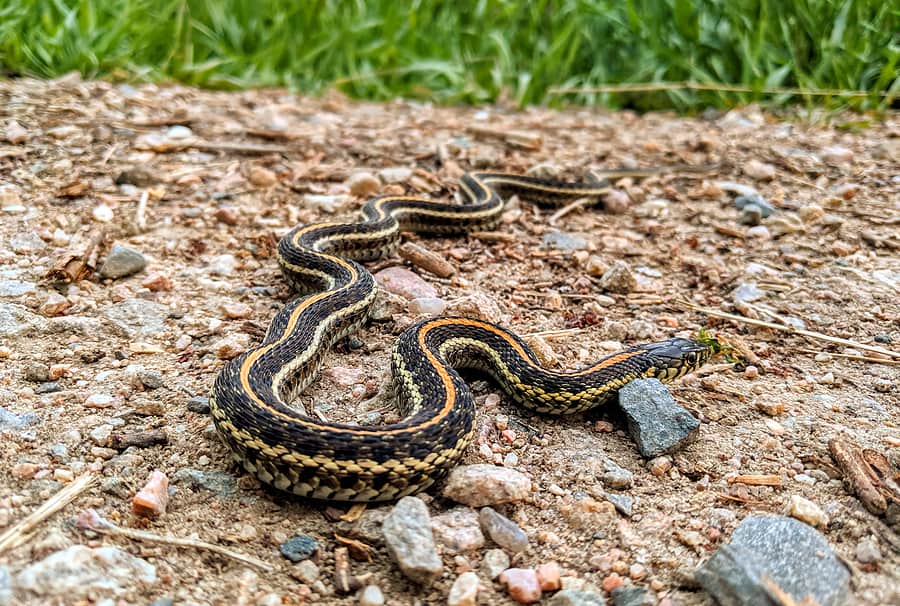READY TO GET STARTED?
REQUEST A FREE ESTIMATE
Fill out the form below or call (888) 466-7849 for a free, no-obligation estimate.

Snakes are one of the most feared pests homeowners can find in their yards. The likelihood of snakes coming onto your property depends on several factors like your location, surrounding landscape, nearby water source, available food supply, and your landscaping and maintenance. While the first instinct is usually to either run or get rid of it quickly, snakes can actually be pretty beneficial to have around. Instead of killing snakes, some people prefer to try and repel them to keep them from coming into the yard in the first place, or deter them from staying there if they’ve already taken up residence. There are several snake repellent products on the market, but do any of them really work? Here are some of the most common snake repellents, the reasons why you should avoid them, and some snake prevention tips you can use around your home.
Mothballs are one of the most popular snake repellent products. The active ingredient in mothballs is either naphthalene or paradichlorobenzene. Both of these products are known to be toxic to insects and mammals but are actually not effective on snakes (because they are actually reptiles). In fact, naphthalene has been proven to cause illness in humans (especially children) and pets. Additionally, using mothballs outside the home actually violates their product labels.
Sulfur is another common snake repellent ingredient and is often seen in many commercial snake repellent products on the market. Sulfur has been proven to not be effective against snakes, however, much the same as mothballs.
When snakes are terrorizing a chicken coop, many people will use ceramic or wooden eggs or even golf balls to trick snakes into eating them instead of real chicken eggs. The problem, however, is that when snakes eat these fake eggs they die a long, slow, painful death over the course of many weeks. Once they’re gone, another snake will often show up and take its place, defeating the purpose of eliminating the original snake. If you are using ceramic eggs to encourage your hens to lay, make sure to glue them down so snakes can’t eat them accidentally.
Many people will catch and release predatory snakes like king snakes and racers onto their property to hunt and kill the problematic snakes they have. This practice is usually unsuccessful and in some places is even against the law. The same goes for capturing the problematic snakes on your property and releasing them elsewhere.
Some people will lay out sticky traps in hopes of catching the nuisance snake so they can kill it or relocate it. The problem with this method is that the sticky traps will often catch non-targeted animals instead of the snake, resulting in a slow, agonizing death for the animal.
Many people employ guns or shovels to kill snakes that come onto their property. This puts people at great risk for injury either from the snake going on the defensive and biting its attacker or from the homeowner or innocent bystanders being injured by ricocheting bullets, etc. Once the snake is killed, it is often replaced by another snake that takes its place. A better deterrent for snakes is to spray them with a blast from the water hose. This encourages them to find a new location without harming them or anyone else.
Instead of using ineffective snake repellent products and methods, consider going to the source of the problem to help get rid of it. Snakes will come into your yard because they are attracted to something there – whether it is a water source, food source, or a place to shelter. Eliminating what attracts them will help keep them out and encourage them to find a different location to live in. Here are some snake prevention tips you can utilize to help make your yard less inviting to them.
The large majority of snakes you will encounter in your yard are harmless to humans. All snakes (even venomous snakes) are beneficial and play an important role in the ecosystem. Many snakes eat garden pests like slugs and snails, helping protect your plants and flowers. Some snakes eat rodents, helping control their populations and keeping them from spreading diseases to you, your family, your pets, and your livestock. There are even studies showing where rattlesnakes help keep Lyme disease in check. If you’ve tried the tips above and you still have an issue with snakes or any other pests, contact your local pest control company for a comprehensive evaluation and treatment plan.
The Traveler’s Guide to Bed Bugs
Take the Homework, Leave the Lice